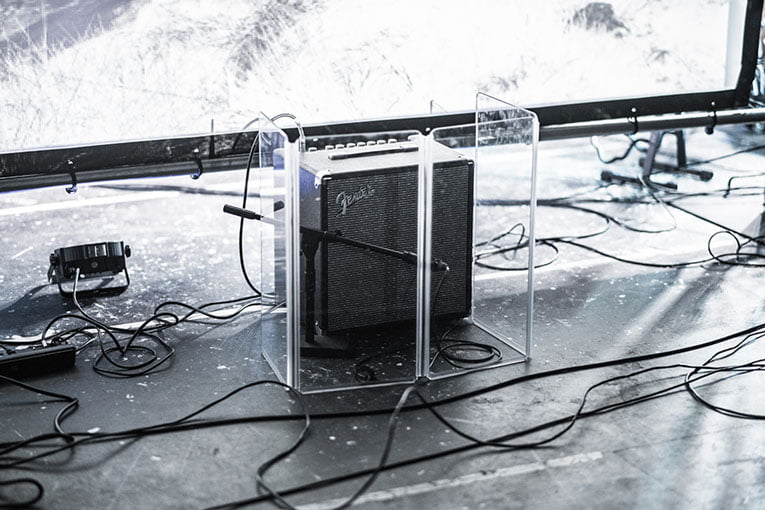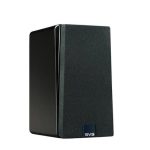When setting up an audio system, you’ll need to wire the speakers the right way, especially when wiring multiple speakers to an amplifier. There’re various methods of wiring speakers. You can choose to wire them in parallel, series, or combine the two methods. The method you choose will depend on the overall impedance of the multiple speakers, that is to say, the total load is connected to the speaker. When the impedance on the load is decreased, the amp load is increased and this means the amp will have to work harder to meet the current demand by the load. You can compare how this works with an automotive. For instance, if an automotive is going uphill, its load is heavier than when moving on a flat road. Now let’s talk about wiring speakers in series.
Can you wire speakers in series?
It’s possible to wire multiple speakers in series. In case you want to connect two speakers to a 2-channel amp, or 4 speakers to a 4-channel amp, then you’ll need to consider the ability of the amp to power loads with low impedance. Ignoring how to wire them the right way will give you poor sound, or even burn out the amp. When wiring speakers in series, you need to remember the following:
- More numbers of speakers will result in higher impedance.
- Higher impedance will result in a lower acoustic output.
- When making a series speaker connection, you should do your best to ensure that the total load for each amp channel doesn’t exceed 16 ohms. Why is that so? Well, most amps are designed to handle a maximum of 16 ohms per channel.
Wiring 2 speakers in series
When connecting two speakers in series, let’s say connecting speaker X and Y to an amp, you should wire the +ve connector of one amp channel to the +ve connector of speaker X. The -ve connector of speaker X is then connected to the +ve connector of speaker Y. You’ll then create a loop by connecting the –ve connector of speaker Y to the –ve output connector of the same amp channel.
Wiring three or more speakers in series
If you’re wiring three or more speakers in a series connection, you’ll simply alternate the –ve and +ve terminals between the speakers. For instance, to wire three speakers X, Y, and Z, you’ll need to connect the –ve connector of speaker X to the +ve connector of speaker Y. You’ll then connect the –ve connector of speaker Y to the +ve connector of speaker Z. For more speakers, you’ll go on and on like that until you wire all of them.
So how do you calculate the impedance?
When wiring speakers in series, it’s important to calculate the total load impedance. Here’s the formula:
- Load impedance (Zt) = Za + Zb
Where Za is the impedance of speaker A and Zb is the impedance of speaker B.
For example, if you want to wire 4 subs to a 2-channel amp, and each channel can handle a maximum of 2 ohms, then the total load impedance load at each channel will be Zt= 2 + 2= 4 ohms when you wire them in series.
Calculating power requirements in series speaker wiring
It’s crucial to know the power that each and every speaker will get from an amp channel when connecting two or more speakers. By knowing the power of each channel, you’ll save yourself from expensive damages such as a blown speaker.
For example, when wiring multiple speakers to an amp in series, the power output at each channel is calculated using this formula:
- Power output (Po) = Pr * (Zr ÷Zt).
Where Pr represents the amp power rating, Zr represents the amp output impedance, and Zt represents the load at each amp channel.
For example, if you have 4 speakers each rated 200 watts, and the amp has an impedance of 8 ohms at each channel, and the total load impedance is 16 ohms, then you can calculate the power output as follows:
Power output (Po) = Pr * (Zr ÷ Zt).
Po = 200 * (8÷ 16)
= 100 watts.
As such, each amp channel will need to deliver 100 watts to a load of 16 ohms. So what’s the overall power that each speaker gets?
The overall power (Pa) = Po * (Zs ÷ Zl) where Zs represents the impedance of each speaker and Zl represents the load impedance.
Thus, Pa = 100 * (8 ÷ 16)
= 50 watts.
An easier method of wiring speakers in series….
If the above calculations sound challenging, especially if you’re not highly skilled in connecting sound equipment, or you don’t want to do all the math, then you can easily connect multiple speakers in series using a speaker selector switch box. With a switch box, you’ll just wire each speaker to the switch box. Next, you’ll wire the switch box to the amp. Note that you’ll connect each +ve terminal to the respective +ve terminal and do the same with –ve terminals. Once you’ve connected everything, you’ll select a switch on the switch box and set it to a series connection. Then turn everything on. The switch box checks that the impedance is matching to avoid amp overload. It distributes similar loudness across all the speakers. You can also switch off a speaker in an area where you don’t require sound.
In conclusion….
While it’s possible to connect similar speakers in series to create more impedance load, the maximum loudness will be reduced when everything else is equal. The good thing is that power will be divided equally between the interconnected speakers, meaning that it’ll be easier for them to operate. On a similar note, wiring dissimilar speakers using a series connection will lead to higher impedance load and still cut on the overall loudness with everything else equal. However, power won’t be divided equally between dissimilar speakers, leading to poor sound since the speakers won’t sound the best they can. Thus, connecting speakers in series reduce the overall loudness, but it works well for speakers that are similar in terms of power ratings.
Michael Evanchuk is a San Francisco-based sound engineer with 20 years’ experience installing, troubleshooting, and repairing commercial, automotive, and household sound equipment. Evanchuk owns an auto stereo center, where he offers highly competitive car audio installation and repair services. He has written dozens of articles on different sound engineering topics, all of which have been published in leading journals, blogs, and websites.


![Series Vs Parallel Speaker Sound: [Wiring Explained] Series Vs Parallel Speaker wiring](https://audiomention.com/wp-content/uploads/2022/07/Series-Vs-Parallel-Speaker-wiring-150x150.jpg)


